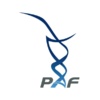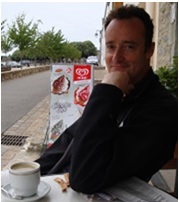Abschlussbericht – Kann 2024
Ken Maclean, PhD, Universität von Colorado Denver
„Chemische Chaperonbehandlung zur Wiederherstellung der Enzymaktivität bei Faltungsmutationen von Propionyl-Co-A-Carboxylase: Auf dem Weg zu einer personalisierten Therapiestrategie bei Propionsäure (PA)"
Propionazidämie (PA) (MIM 606054), ist eine schwere lebensbedrohliche Erkrankung, die typischerweise in der frühen Geburtsphase auftritt. Personen mit PA weisen eine Proteinunverträglichkeit auf, Erbrechen, Gedeihstörung, Lethargie, und schwere metabolische Azidose
Im Folgenden finden Sie häufig gestellte Fragen und Antworten zur Diagnose von Propionazidämie. This disease can result in mental retardation and without treatment, death can occur quickly, due to, infection, heart problems, or brain damage. There is a pressing need for improved treatments for PA.
PA is caused by mutation in an enzyme called propionyl-CoA carboxylase (PCC) This enzyme consists of two non-identical subunits, α and β, encoded by two different nuclear genes, called PCCA and PCCB.
We observed that a number, but not all, der Patientenmutationen im PCCB-Gen erzeugen aufgrund der Auswirkung dieser Mutation auf die Fähigkeit dieses Proteins, sich korrekt zusammenzusetzen und zu falten, nur eine minimale nachweisbare PCC-Aktivität. Wenn das Protein nicht die richtige Form annimmt, es kann nicht richtig funktionieren und verursacht so PA. Wir haben vorgeschlagen, eine Reihe von Strategien anzuwenden, um zu sehen, ob wir die PCC-Aktivität wiederherstellen können, indem wir diesem Protein helfen, seine Mutation zu überwinden und sich richtig zu falten. Die Idee war, dass wir die Form der Proteine wiederherstellen, it will get its function back and the PCC activity can be restored. To do this, we treated bacterial cells expressing the mutant PCC proteins with a range of different chemicals called “Chaperones”. These chemicals have the ability to help some mutant proteins fold into the correct shape and thus make a “broken” protein work again.
In this project we screened 32 different candidate chemical chaperones at a range of concentrations and were able to identify 4 candidates that were capable of at least partially rescuing PCC enzyme activity in our bacteria different PCCB folding mutant proteins.
Two of these chemicals were able to fix the mutant proteins to the point that their activity was essentially normal. in our bacterial system. We then tested these chemicals in PA patient derived skin cells grown in our lab, that carry the R165W mutation in PCC. Without treatment, these cells do not show any PCC activity. Beide Chemikalien waren in der Lage, die Funktion des R165W-PCC-Mutantenproteins bis zu dem Punkt, an dem es dazwischen lag, erheblich zu retten 50 to 60% der in normalen Hautzellen beobachteten Aktivität. Wenn wir in der Lage wären, dieses Niveau der PCC-Aktivität bei Patienten wiederherzustellen, Es ist sehr wahrscheinlich, dass die meisten klinischen Probleme der PA verhindert würden. Subsequent work in our lab found that this effect can also be achieved by inducing natural chaperone proteins in the skin cells and that the accumulation of badly folded PCC protein hurts the cell and is likely to be contributing to some of the clinical problems in PCC.
Collectively, our work opens up a new way of looking at some specific forms of PA and indicates a new possible line of therapy for this neglected condition. Diese Arbeit wäre ohne die Unterstützung der Propionic Acidemia Foundation nicht möglich gewesen, und wir danken allen herzlich, die zu diesem Fonds beigetragen haben.

